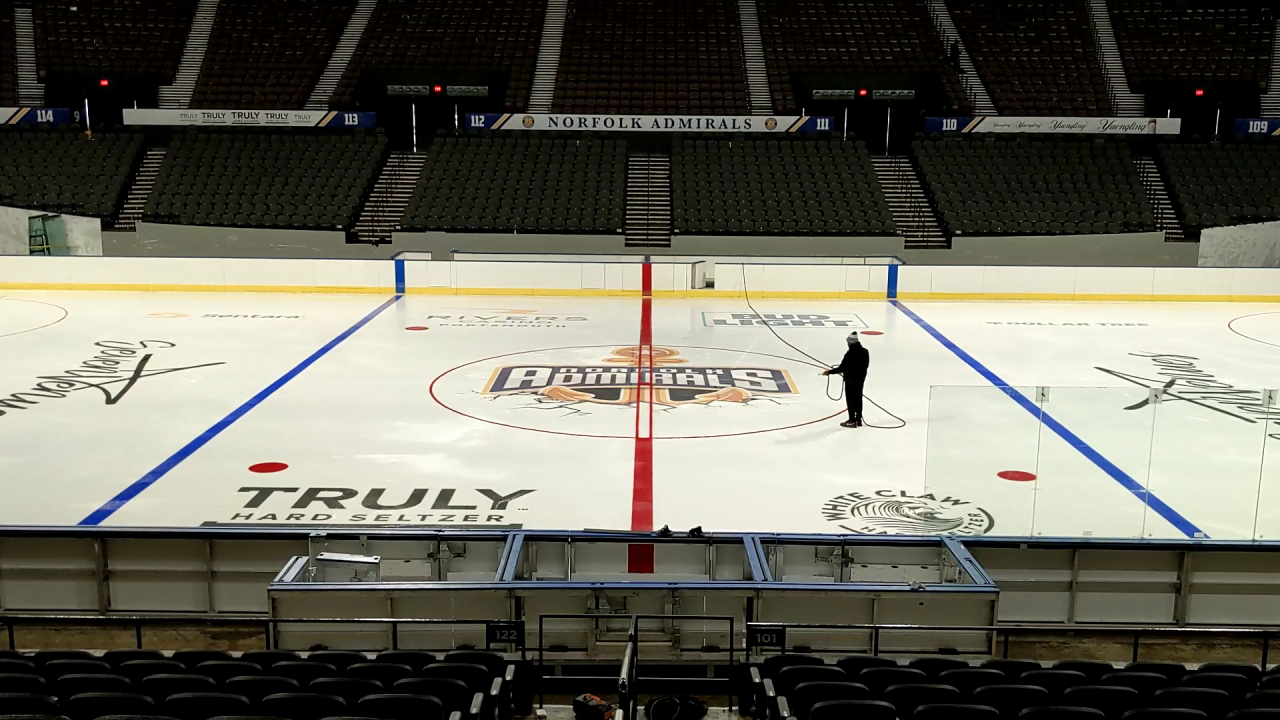Hampton Roads has a large boating community and the Coast Guard is here to keep you safe on the water no matter the weather.
Station Portsmouth is one of six stations in the area. They train year-round with the Elizabeth City Air Station conducting different hoisting evolutions and acting as a safety vessel when rescue swimmers are dropped in the water.
This station alone had over 100 rescues in 2023. To prepare for these missions, they frequently do drills, including man overboard, search pattern, and mechanical casualty.
Winter training is especially important because cold water can be more dangerous than cold air. The Coast Guard says you only have 1-6 hours to survive in cold water. Compare that to potentially a few days in warm water.

Weather
How Norfolk International Airport prepares for winter weather
The Coast Guard has different personal protective equipment for the cold water. They have a 3-layer system that includes a wicking layer to keep sweat absorbed, a fleece suit to keep them warm, and a shell to keep them dry with rubber gasket neck and wrist seals. This is paired with a neoprene hood to help prevent body heat from escaping too quickly, thermal lined boots with a steel shank in the middle, and gloves.
Compare that to their summer suits which are thinner and lightly insulated with flotation equipment inside the material.
Coast Guardsmen test their suits by treading water for 10 minutes, swimming 100 yards, and sitting in the huddle position to make sure there are no leaks.
They urge you to have the proper equipment yourself and dress for the water temperature, not the air temperature.
Senior Chief Petty Officer Warren Wilson warns if you “for any reason, enter the water, the likelihood of hypothermia or cold water shock is highly likely. And then they become a search and rescue case in itself.”
If you’re out on the water, have a flotation device, insulated equipment that has a USCG approved tag, a VHF radio (the Coast Guard continuously monitors Channel 16), emergency distress flares, a cell phone with battery backup, and share your float plan with a friend and check in with them at your checkpoints. It’s also important to continuously monitor the weather – Our First Warning Storm Team has you covered there!

Weather
Behind the scenes of Norfolk Scope's ice-making process
If you happen to go overboard in cold water and can’t get out of the water, stay calm, but act fast.
“Proven theory that the first minute is your toughest minute to survive because you’ll actually, once you enter the water, in cold water environment, you’ll actually lose control of breathing. So roughly it takes a minute to get your breathing under control. And then 10 minutes you have to control your muscles. And within 10 minutes you can probably lose all muscle control to stay afloat. That’s why we’re always pushing flotation equipment,” explains Wilson.
If you’re stuck in the water, get into a huddle position to keep the most warmth in your body. It can take up to one hour for the Coast Guard to reach their outer jurisdiction areas. However, they do coordinate with other agencies and marine patrols that may be closer to the incident to speed up response time.

Weather




